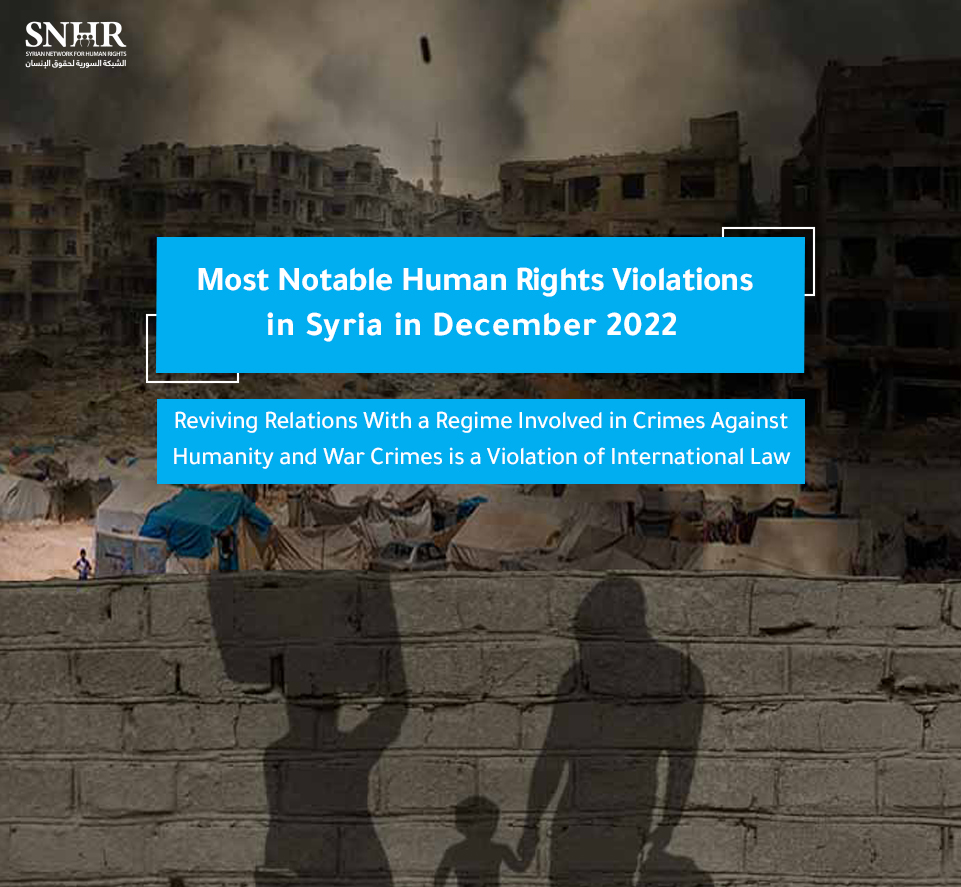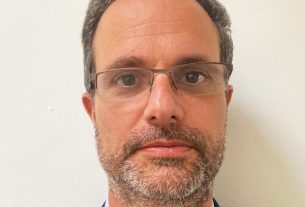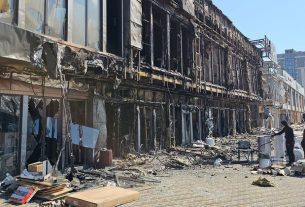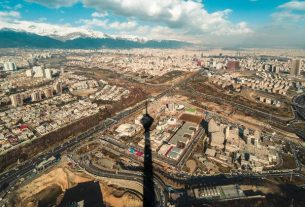Reviving Relations With a Regime Involved in Crimes Against Humanity and War Crimes is a Violation of International Law
Press release: (Download the full report below)
Paris – The Syrian Network for Human Rights today released its monthly special report summarizing the human rights situation in Syria for the previous month, documenting the most notable human rights violations committed by the parties to the conflict and the dominant forces in Syria in December 2022. The report title stresses the fundamental point that any revival of relations with a regime such as Syria’s, which is involved in crimes against humanity and war crimes, is not only morally repugnant, but a violation of international law.
The 25-page report provides details of the most prominent violations documented in December 2022, and of the civilian victims, who were killed by the parties to the conflict and the forces in control during this period, in addition to providing a summary of the month’s arrests/detentions and enforced disappearances. It also sheds light on the attacks on civilian objects which SNHR has been able to document during this period.
In compiling our reports, SNHR relies on continuous monitoring of incidents and news reports and on information from a wide network of trusted contacts from dozens of diverse sources, in addition to exhaustive analysis of a large number of photos and videos.
In December, the report reveals, SNHR documented the killing of 55 civilians, including nine children and two women (adult female), most of whom were killed by other parties. Among these, the report documents that three individuals died due to torture at the hands of the parties to the conflict and the controlling forces in Syria.
As the report further reveals, December saw no fewer than 2,136 arbitrary arrests/detentions documented, including eight children and four women, at the hands of the parties to the conflict and the controlling forces in Syria. The majority of these were arrested or detained by Syrian regime forces in the governorates of Damascus suburbs, then Damascus, and then Daraa.
The report further notes that 2022 witnessed at least 92 attacks on vital civilian centers, including 22 at the hands of the Syrian-Russian alliance. Among the 92 attacks were 14 on educational facilities (schools and kindergartens), six on medical facilities, and seven on places of worship. The report adds that December saw no fewer than four attacks on vital civilian facilities, including one attack on a place of worship. Moreover, the report notes that November saw the highest number of attacks on vital civilian facilities documented in 2022, accounting for 21 percent of all attacks on vital civilian facilities in 2022, followed by April with 11 percent.
The report notes that December saw a relative decline in the frequency of artillery attacks by Syrian regime forces on the Idlib region in northwestern Syria. The report documents a number of sporadic attacks by regime forces targeting areas close to the dividing lines with the armed opposition’s territories. Furthermore, the report documents attacks on villages and towns in western Idlib suburbs far from the dividing lines. Additionally, the report reveals that on December 4, protesters held a demonstration in Suwayda city condemning the poor living conditions, with some protesters calling for the ousting of the regime. In response, the regime security forces fired directly at the protestors, killing one civilian, and injuring 18 others. Meanwhile in Daraa governorate, the last week of December saw multiple demonstrations in the cities of Dael, Sanamayn, and Jasim in northern Daraa, and in the towns of Tal Shehab and Mzayreeb in western Daraa in the aftermath of the Syrian regime’s arrest of a woman in al-N’iema town. In addition, the report notes that since the beginning of December, the Syrian regime’s Fourth Division has been deploying reinforcements in the vicinity of the neighborhoods of al-Ashrafiya and al-Sheikh Maqsoud in Aleppo city, as well as in the areas of al-Shahba in northern Aleppo, which are under the control of the Syrian Democratic Forces (SDF), effectively enforcing a siege on the area in the wake of disputes concerning the transfer of fuel from the SDF-controlled territories to those controlled by the Syrian regime’s, causing a price hike for heating materials.
Meanwhile, the report notes that the SDF continued their ground-based attacks on the northern and eastern Aleppo suburbs, although no civilian deaths were documented as resulting from these. The same area was also the target of ground-based attacks by Syrian regime forces, which resulted in fatalities. On a related note, the report reveals, the SDF announced the launch of a new security operation codenamed, ‘Al Jazira Thunderbolt’, which involves the group’s internal security forces in northern and eastern Syria coordinating with international coalition forces, to eliminate ISIS cells. Dozens of alleged ISIS affiliates have been arrested in the operation, with these forces announcing a state of emergency and imposing a curfew in Raqqa city since December 26, in response to an attack on the same day by unidentified gunmen believed to be ISIS affiliates that targeted an SDF center in Raqqa city. The report also notes that Turkish forces and armed opposition factions/Syrian National Army (SNA) continued their ground-based attacks on the different areas under the control of the SDF in northern Aleppo suburbs, and the areas of Manbej and Ein al-Arab in eastern Aleppo suburbs.
On the subject of explosions, the report documented explosions of IED and remnants left over from previous bombardment in the governorates of Daraa, Hasaka, and Deir Ez-Zour. Landmines claimed more lives across Syria in December, mostly in Hama governorate. In December, a total of six civilians, including two children, were killed by landmines, bringing 2022’s total civilian death toll from landmines to 128, including 69 children and nine women. Furthermore, the report notes that December also saw more assassinations at the hands of gunmen whom SNHR has so far been unable to identify in various governorates and areas across Syria, mostly in the governorates of Daraa and Deir Ez-Zour.
As the report further notes, December saw unprecedented deterioration across the economic, living, and service sectors in the Syrian regime’s territories. Fuel prices increased again, with the price hike for already-scarce fuel resources, along with the Syrian regime’s government reductions in subsidies on those resources in its territories, adversely affecting all aspects of life and exacerbating the burdens on civilians in those areas. For instance, rising transportation costs led to a steep increase in the cost of vegetables. Moreover, public and private transport services effectively stopped working, while many bakeries selling bread in Damascus city also ceased working due to the lack of fuel needed for their operations.
Also in December, the Syrian Pound exchange rate saw an unprecedented decline, which naturally led to further price increases for most foodstuff and food supplies.
The report further reveals that civilians in northwestern Syria are still grappling with the increasing prices for foodstuff and food supplies. On December 12, the World Food Programme (WFP) notified its partner humanitarian organizations in northwestern Syria of a decision to reduce the value of its cash coupons and food baskets from $60 to $40 as of January 2023. The report also recorded that December saw SNA persecution targeting owners of olive groves in Afrin area and its suburbs, who are mostly of Kurdish ethnicity. The SNA has been imposing royalties and fees on olive groves and olive harvest at olive presses. In northeastern Syria, on the other hand, the living situation is also worsening. As with other Syrian regions, civilians in northeast Syria are grappling with price hikes for foodstuff, food supplies, and fuels, as the Syrian Pound’s value declines sharply, with local authorities failing to regulate the market.
The report also documents that the suffering of IDPs in northwestern Syria continued in December, =in relation to both the humanitarian conditions and the provision of services, especially in light of the worsening economic conditions and mounting needs which have reached unprecedented levels, as aid from relief organizations has been shrinking. Further adding to this suffering are the almost complete lack of job opportunities in the region and waning purchasing power especially for IDPs living in camps. The report also documents multiple fires in the camps of northwestern Syria in December, while a number of camps were slightly damaged due to the heavy rains which formed watercourses in areas near the IDPs camps in the Salqin area, southern Idlib suburbs and Izaz in northern Aleppo suburbs.
In northeastern Syria, the cholera outbreak has exacerbated the suffering of IDPs, along with the ssevere shortage of drinking water, as well as the relief organizations’ shrinking efforts in provision of support for IDPs and improving their food security and health care. The report also notes that in al-Rukban IDP Camp on the Syrian-Jordanian borders in eastern Homs governorate, which houses around 7,500 individuals, IDPs are still grappling with extremely difficult living conditions and a severe shortage of food and medical supplies, made all the worse by the freezing winter weather.
The report reveals that while the Syrian regime allowed some families to return to Ein al-Feja village after they had obtained security clearance from the regime’s Military Security and the National Guard Security Office, they were only allowed to do so on the precondition that they do not carry out any repairs or modifications to their houses, many of which were heavily damaged in bombing.
The report stresses that all the evidence collected suggest that attacks have been directed at civilians and civilian objects. The Syrian-Russian alliance forces have committed a large variety of crimes, from extrajudicial killings, to arrests, torture and enforced disappearances. The report notes that these attacks and indiscriminate bombardment by air and ground forces have caused the destruction of homes, schools, hospitals, shops and other structures, and there are reasonable grounds to believe that the war crime of attacking civilians has been committed in many cases.
The report affirms that the Syrian regime has violated international humanitarian and customary law, and UN Security Council resolutions, in particular resolution 2139 and resolution 2042 related to the release of detainees, as well as resolution 2254, all without any accountability.
The report further notes that the continuing indiscriminate and disproportionate shelling carried out by the Kurdish-led Syrian Democratic Forces is a clear violation of international humanitarian law, with the group’s indiscriminate killings amounting to war crimes.
The report calls on the UN Security Council to take additional measures after the adoption of Resolution 2254 and stresses the need to refer the Syrian issue to the International Criminal Court and to hold accountable all those involved, including the Russian regime, all of whom have been proven to be involved in the commission of war crimes.
The report recommends that the UN Security Council should adopt a resolution on the prohibition of the use of cluster munitions and mines in Syria similar to the existing prohibition of the use of chemical weapons, which should include points on how to dispose of the remnants of these dangerous weapons.
The report also calls on all relevant United Nations agencies to make far greater efforts regarding humanitarian, food and medical assistance in areas where hostilities have ceased, in camps for internally displaced persons, and in the follow-up of funding from states which have pledged the necessary voluntary contributions.
The report further calls for the application of the principle of the responsibility to protect (R2P), especially after the exhaustion of political steps through all agreements, statements of cessation of hostilities and Astana agreements, stressing the need to resort to Chapter VII and apply the R2P principle, approved by the United Nations General Assembly.
The report additionally recommends that the International Independent Investigation Commission (COI) should open investigations into the incidents contained in this report and previous reports, and confirms the Syrian Network for Human Rights’ readiness to cooperate in any such endeavors and to provide more evidence and details. It also calls for the issue of mines and cluster munitions to be highlighted in the COI’s next report.
The report also calls on the UN Envoy to Syria to condemn the perpetrators of crimes and massacres and to denounce those who are mainly responsible for the destruction of the agreements on reducing the escalation, as well as calling on him to restore the peace process to its normal form after Russia’s attempts to distort it and to present the Constitutional Committee to the transitional government.
The report also stresses the need for the Syrian regime to cease its indiscriminate shelling and targeting of residential areas, hospitals, schools and markets, and its use of prohibited munitions and barrel bombs, and to comply with United Nations Security Council resolutions and customary humanitarian law.
The report further stresses the need for the countries supporting the Syrian Democratic Forces to press the SDF to cease all their violations in all the areas and towns under their control. In the report, the SNHR again calls on the Syrian Democratic Forces to immediately stop recruiting children, to hold all officers involved in doing so accountable, and to undertake to immediately return all children arrested for military conscription to their families.
The report further recommends that armed opposition factions and the SNA should ensure the protection of civilians in all areas under their control, distinguish between military and civilian targets, and refrain from any indiscriminate attacks.
The report additionally stresses the need for humanitarian organizations to develop urgent operational plans with a view to securing dignified, safe shelter for internally displaced persons; and to provide care facilities and mechanisms such as medical establishments, schools and ambulances with markings visible from long distances, as well as making a number of other additional recommendations.



